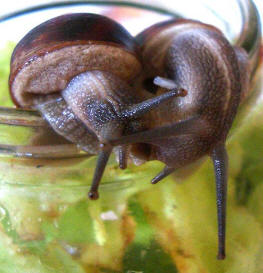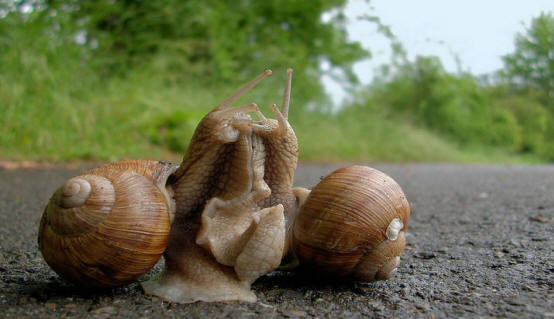While little is known about the specifics of reproduction in Daedalochila scintilla, by looking at the reproductive behavior of its subclass, Pulmonata we can make a reasonable assumption about what the process is like. All pulmonate gastropod species are hermaphroditic, and the vast majority of them are monecious, or contain both male and female reproductive organs. (Webb, 1950) In terrestrial pulmonates sperm is transferred in a packet known as a spermatophore, which is transferred through the genital pore where it releases the sperm inside the adjacent snail
(Webb, 1950).
Polygrids can reproduce abundantly when in the proper habitat (Webb, 1950). They have two breeding seasons yearly, vernal and autmnal (Clarke, 1985). It begins with a courtship process that can take up to two hours (Clarke, 1985). The two snails approach each other face to face, next their tentacles shorten, genital pores dilate, then their penises are everted (Webb, 1950). The snails then move side by side begin gnawing on each other's organs, and eventually intertwine penises (Webb, 1950). Next the semen is injected onto one another, the penises untwist, and the semen is pulled in with the reverting penises (Webb, 1950). After internal fertilization polygrids lay eggs. The snails dig burrows approximately 1-2cm deep and lay 10-20 eggs that are usually less than 2mm in size (Gugler, 1963). The eggs are white with a thin flexible shell (Gugler, 1963). The snails develop directly with no larval stages (Clarke, 1985). Their shell develops planospirally which lead to their asymmetrical appearance (Clarke, 1985).
To learn how polygyrids interact with other species click here.

